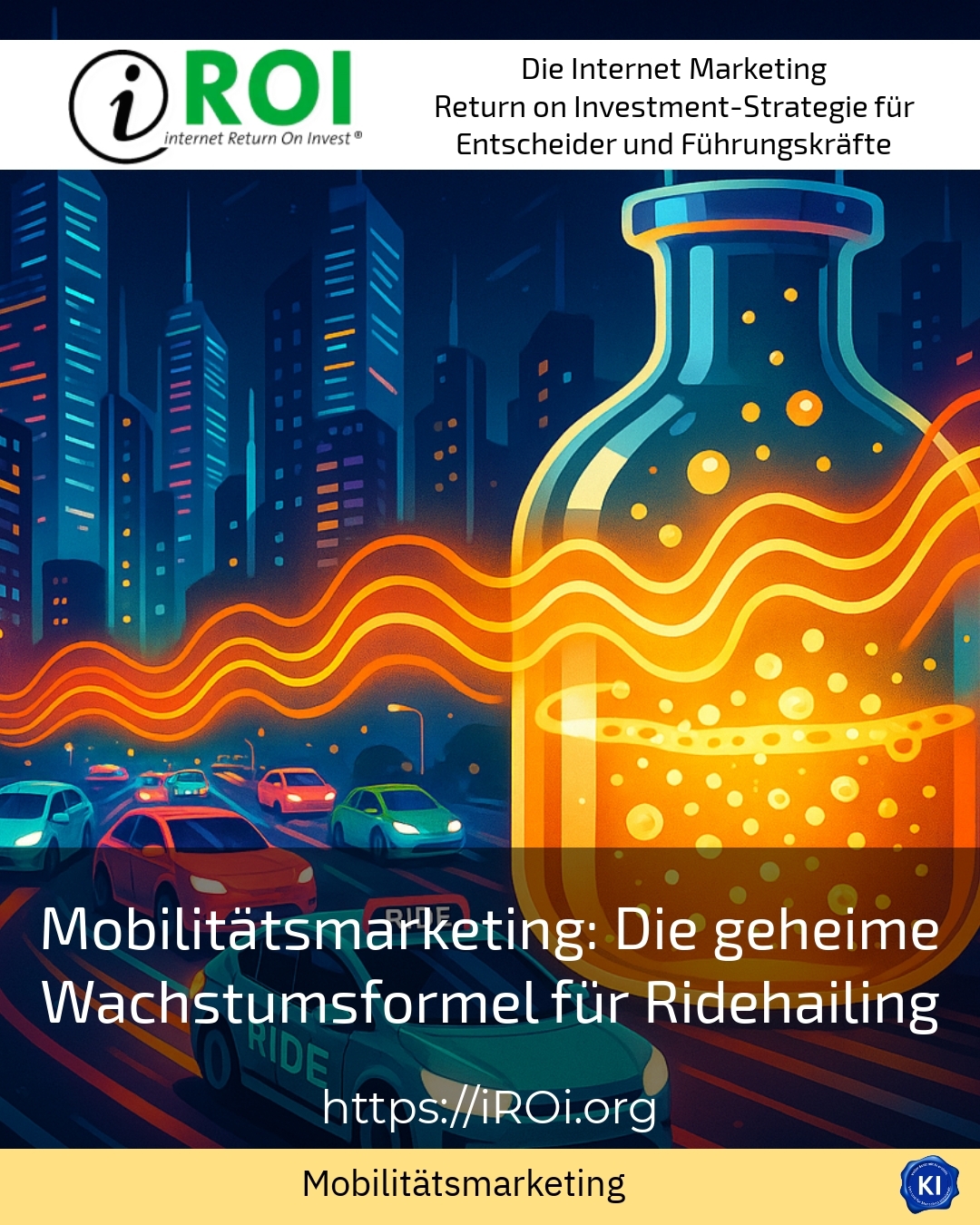Mobility marketing plays a decisive role in making companies visible and successful in the mobility sector. Through targeted strategies, it supports ridehailing providers in optimally adapting their offers to the needs of customers and creating sustainable growth impulses. Mobility marketing combines traditional methods with modern digital approaches to efficiently reach a broad target group.
Mobility marketing as a driver for growth in ridehailing
Ridehailing services such as Uber or Lyft offer uncomplicated door-to-door transport, which makes them particularly attractive. However, the success of such services depends largely on clever mobility marketing. It makes it possible to connect passengers and drivers digitally and locally and to optimise the service through personalised communication.
One tried-and-tested example is targeted app push messages with special promotions for specific location groups. This can increase customer loyalty and frequency of use. Campaigns on social media platforms that emphasise regional travel offers and build trust are similarly effective. Mobility marketing helps to quickly increase awareness, especially when introducing new services.
BEST PRACTICE with one customer (name hidden due to NDA contract) The introduction of a ridehailing subscription model was accompanied by a targeted mobile marketing campaign that combined SMS and in-app advertising. The result was a measurable increase in booking rates and a sustainable improvement in customer loyalty because customers were addressed personally and won over with exclusive benefits.
Important pillars of successful mobility marketing
Mobility marketing encompasses a wide range of measures that are primarily aimed at smartphone users in the digital era. The following elements are needed to ensure spontaneous and relevant communication:
- Personalised messages via SMS or push.
- Mobile apps with user-friendly booking functions.
- Targeted social media marketing for reach and community building.
For example, providers use advertising measures to target new drivers in certain regions or to promote special offers for frequent users. Geo-targeting and data-driven analyses serve as important tools to minimise wastage and reduce acquisition costs.
BEST PRACTICE with one customer (name hidden due to NDA contract) A regional ridehailing platform was able to increase the number of passengers in major cities by 15 % within a few months through targeted social media marketing. Individual user needs were recorded and offers were advertised in a customised manner, which led to a noticeable increase in sales.
Digital innovations and local adaptations in mobility marketing
The mobility industry is strongly characterised by regional differences. Mobility marketing therefore requires a keen sense of the needs of local target groups. A key success factor is the combination of digital technology and local understanding.
Ridehailing services use flexible business models and innovative approaches to respond to different mobility patterns in large cities. Customised pricing models, new subscription formats and cross-selling with other mobility services offer great opportunities here.
The integration of public transport is also becoming increasingly important. Mobility marketing can advertise the combination of ridehailing with public transport services and thus offer customers real added value. Such combined offers not only increase the attractiveness, but also the sustainability of mobility solutions.
BEST PRACTICE with one customer (name hidden due to NDA contract) A ridehailing company has introduced a combined model of ridehailing and public transport in cooperation with local transport authorities. Mobility Marketing supported this step with information campaigns and targeted incentives, which significantly increased acceptance.
Practical mobility marketing: tips for sustainable success
The following recommendations for action can be used to effectively utilise mobility marketing in ridehailing:
- Focus on the wishes of your target group through detailed analyses.
- Use mobile channels to reach customers at any time and in any location.
- Create understandable and attractive offers that clearly communicate the added value of your service.
- Focus on interactivity, for example through apps with feedback options.
- Combine different mobility offers to serve a wide range of usage scenarios.
This is precisely where iROI coaching supports companies and projects by providing targeted impetus and trialling different approaches. Clients often report improved customer loyalty and a more positive brand image thanks to the supported mobility marketing strategies.
My analysis
Mobility marketing is a decisive lever for the sustainable growth of ridehailing services and positioning them successfully in a competitive environment. It combines digital communication with local expertise to make passenger-orientated and innovative offers visible. By consciously addressing target groups and integrating different forms of mobility, a wide range of opportunities are opened up. Companies that rely on technology-supported and at the same time flexible mobility marketing benefit significantly. In this context, iROI coaching remains a valuable support for effectively managing projects and realising practical solutions.
Further links from the text above:
Difference between ridehailing and ridesharing
Mobile Marketing Guide - Definition & Explanation
Insider strategies for ride-hailing success
Mobility Marketing: The secret strategy
Ride-hailing services - impact on mobility and the environment
For more information and if you have any questions, please contact Contact us or read more blog posts on the topic internet Return on Investment - Marketing here.
















